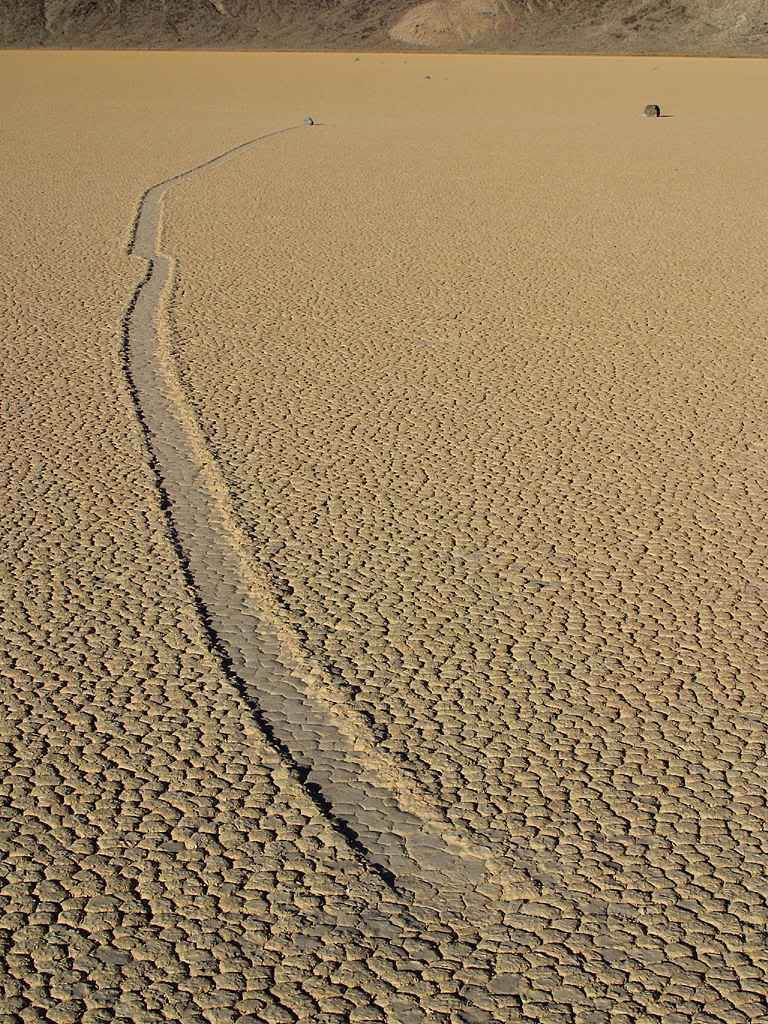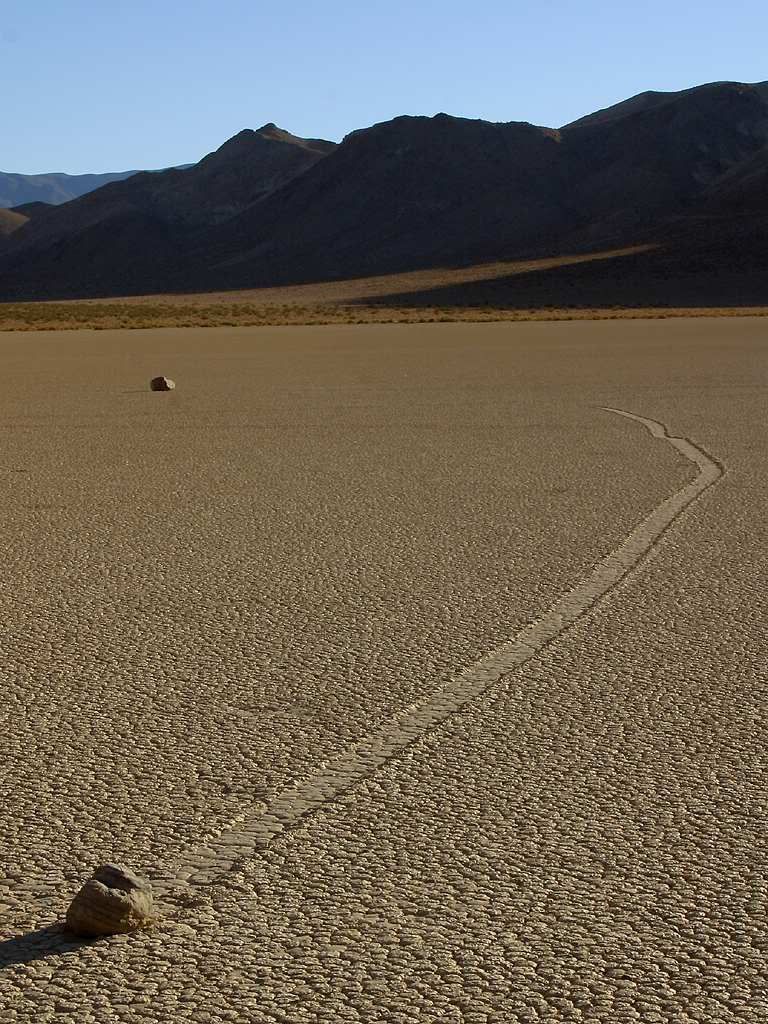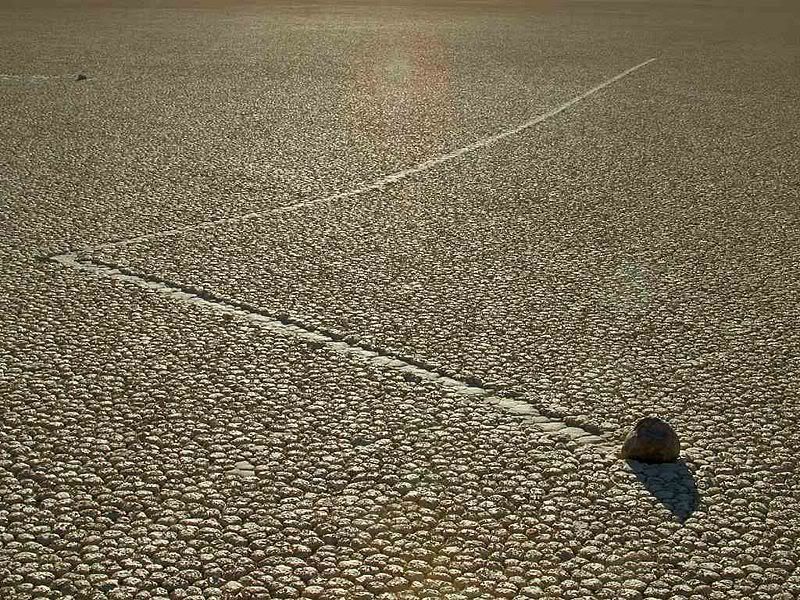Racetrack Playa Basin lies within the boundary of Death Valley National Park at an elevation of 1131 m. It is a dry lake bed that lies between the Cottonwood Mountains to the east and the Last Chance Range to the west. The playa is 3708 feet (1130 m) above sea level, 4.5 km long and 2 km wide.Two islands of rock are exposed from the northern end.
The stones originate from the 260 m high dolomite cliffs on the south end of the playa. Rocks break off the hillside and are ultimately deposited where the playa meets an alluvial fan, about 2 kilometers to the north.
 Photo courtesy PDPhoto.org
Photo courtesy PDPhoto.org In July, 1996 The location of every rock and its associated trail was recorded using Differential Global Positioning System and Geographic Information System. Trail patterns shows a general movement of the rocks toward the north-northeast of the playa, which is consistent with the direction of prevailing winds. Large rocks tend to produce shorter, straighter trails, with the longest and straightest trails concentrated in the lower southeast section of the main playa. When the trails reached the central areas they became more convoluted, again just as the localised winds meet and swirl around, so do the trails. This gives a good clue as to how the rocks manage to migrate on their own.
 Photo courtesy PDPhoto.org
Photo courtesy PDPhoto.org
The southeast section of the main playa is 5 cm lower in than the main playa, and is more frequently saturated by collecting rain water. In addition, there are three natural springs in this section of the playa. It is thought that as the water collects, the strong winds push the surface of the water along the flat expanse of the playa. This then collects around the stones and saturates the ground around their base, locally turning the dry lake bed to mud. It is also postulated that as the temperature falls at night, a thin layer of ice forms making the friction between the rock and playa's base easier to overcome.
Photo courtesy PDPhoto.org
The stones are then propelled along by the amplified force of horizontal winds when air is channeled through one of two topographic corridors to the south central part of the playa, which is a focal point for two such natural wind tunnels.
Studies found that the winds blowing across the playa's surface can be compressed and intensified, with the full force of the wind acting as low to the ground as 5 cm. Stones would feel the full force of winds and their gusts, which can reach 145 km/h during the winter storms.
Video of the wind blowing the water along the playa.
It is thought that the combination of the strength of the wind, and the decrease in friction caused by the water or ice, allows the stones to be propelled along the smooth, flat lake bed for considerable distances.
More Information.
Wikipedia article on the Racetrack Playa.







2 comments:
Delhi escorts have become a certain means of enjoyment and entertainment which not only help you in the reduction of stress but can also play a meaningful purpose in I life.
Delhi Escort
This is making very rocking and very sexy roll.
Call Girls in Karol Bagh
Post a Comment